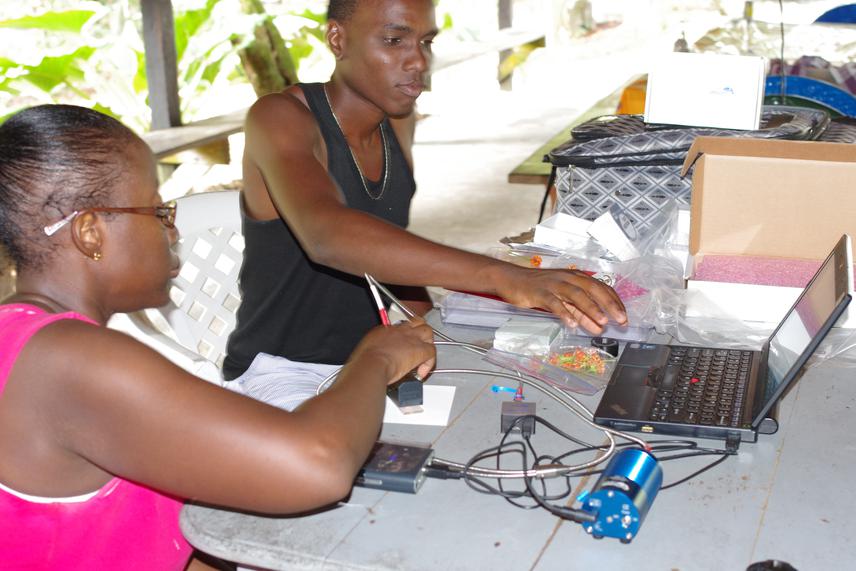Gyanpriya Maharaj
The aim of my research is to elucidate the behavioral and genetic bases of variability in color sensitivity and foraging preferences by three passion vine butterflies.

Guyanese field assistants measuring petal and leaf reflectance.
Guyana is a highly forested, diversity rich region with a low coastal plain and several patches of savannas. Although the rate of deforestation is relatively low in comparison to its South American counterparts there are imminent threats to the forest due granting of concessions to Asian conglomerates, conversion to agricultural lands and mining. Thus it is essential to conduct baseline biodiversity research at this time to inform the conservation biology activities of rainforest and savanna biomes of Guyana, while they are still in somewhat pristine conditions. The goal of my research is to elucidate the behavioral and genetic bases of variability in color sensitivity and foraging preferences by three passion vine butterflies (Nymphalidae, Heliconius melpomene, H. sara and Dryas iulia) at Lantana camara L. (Verbenaceae) in order to fully characterize foraging habitats and flower preference, thereby providing baseline information for habitat conservation and restoration efforts. My work facilitates the collection of butterfly specimens for opsin gene expression work, of field observational data to inform laboratory experiments, and the establishment of a larval and adult food plant nursery.
My research questions are:
Q1 Does the floral foraging environments differ for each study species? And Q2 How do the floral color phases of L. camara influence pollinator behavior? These questions encompass four objectives;
Q1–Objective 1, characterizing the floral foraging environment of each species, by noting each species’ food plants by visual surveys and taking spectrophotometer readings of the petals of visited flowers.
Q1–Objective 2, examining foraging behaviors in different light environments. Butterflies identified as reliable foragers in specific light-habitats will be collected and preserved for future genetic work to tract the various opsin gene expressions.
Q2–Objective 3, measuring temporal color and nectar reward changes of L. camara inflorescences, by measuring the daily spectral reflectance, and sucrose concentration and volume change for every stage. And finally,
Q2–Objective 4, determining whether larger displays are more attractive regardless of nectar reward, or whether the ratio of color phases affect attractiveness to pollinators. This will provide direct evidence of the effect of floral color change and nectar reward on pollinator learning and discrimination abilities.
This project will also facilitate the establishment of a proof of concept foraging and larval plant garden that can be used as a template to restore degraded lands. Thus in this project we are linking pollinator and plant ecology to directly inform sound conservation policy actions.